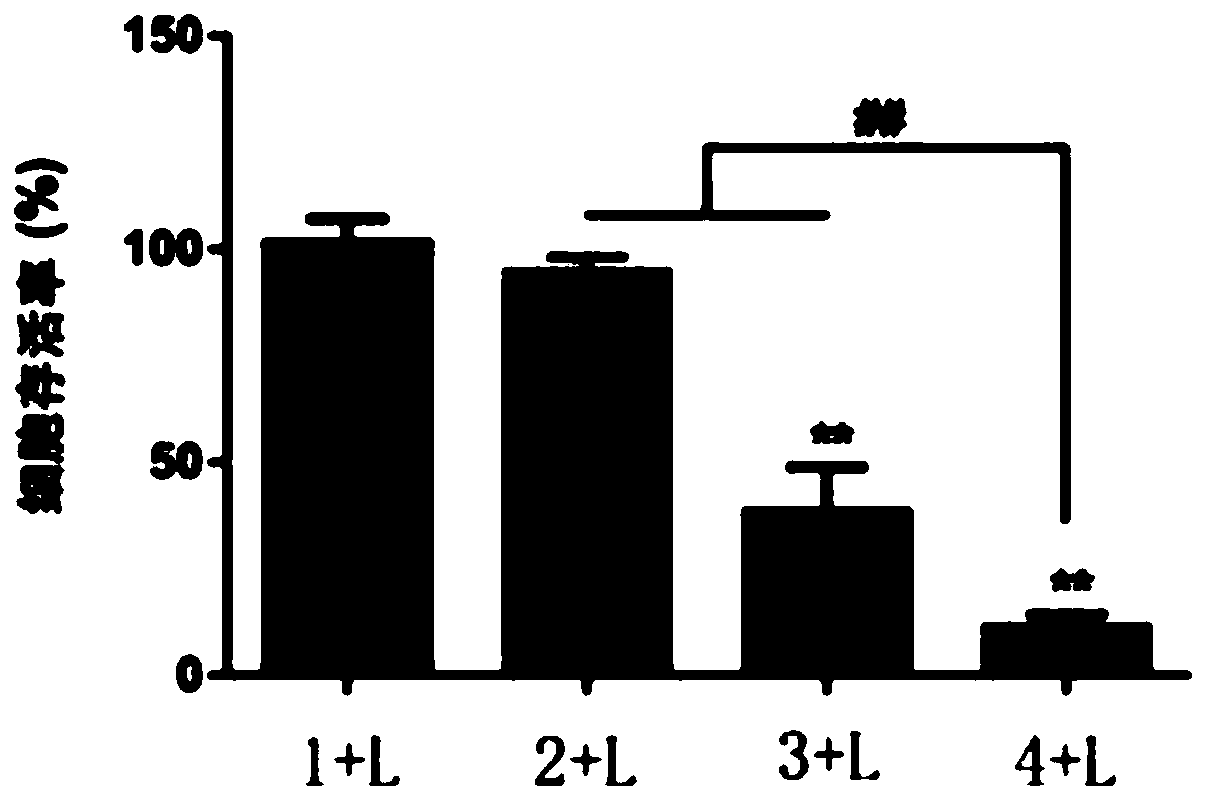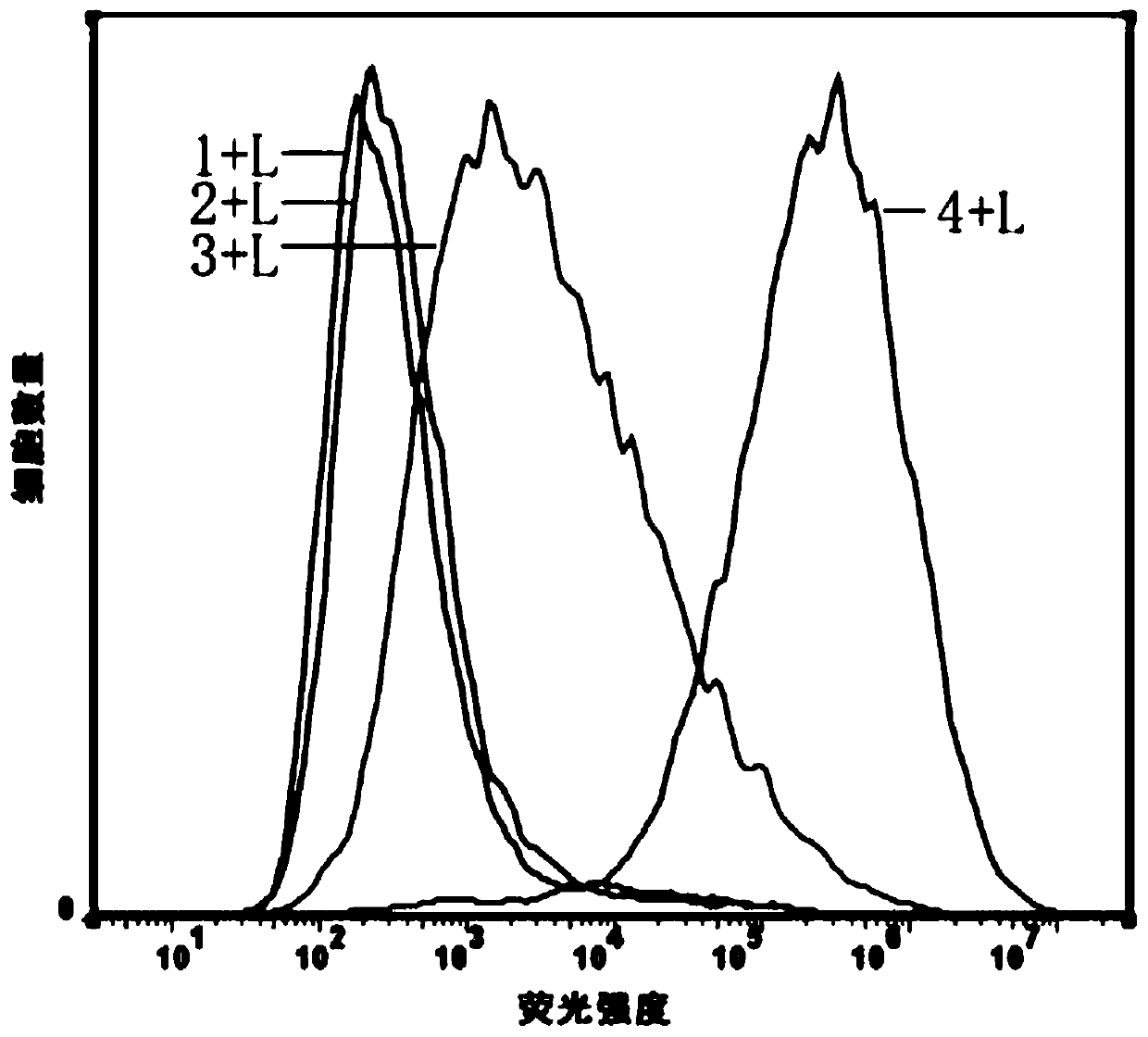Application of 5-aminolevulinic acid and iron chelating agents in preparing anti-tumor combined drug
A technology of aminolevulinic acid and anti-tumor drugs, which is applied in the field of preparation of anti-tumor drugs, can solve problems such as limited treatment depth, limited photodynamic effect, and insufficient protoporphyrin concentration, so as to improve curative effect, inhibit growth, and promote tumor growth. The effect of apoptosis
- Summary
- Abstract
- Description
- Claims
- Application Information
AI Technical Summary
Problems solved by technology
Method used
Image
Examples
Embodiment 1
[0045] Example 1: The effects of 5-aminolevulinic acid or deferasirox and their combined use on the proliferation ability of human tongue cancer cells SCC-25 were detected by MTT assay
[0046] SCC-25 cells in the logarithmic growth phase were digested with 0.05% trypsin for 2 min, then digested with complete medium, centrifuged at 1000 r / min for 3 min, discarded the supernatant, added 9 mL of complete medium and gently blown to make the cells Single cell suspension, count the cells of this cell suspension, adjust the cell concentration to 2×10 4 The cell density of cells / ml was plated in 96-well plates, that is, 5-aminolevulinic acid group, deferasirox group, 5-aminolevulinic acid+deferasirox combined use group and negative control group. After 12 hours, the culture medium was discarded, replaced with serum-free DMEM, and then added with 20 μL per well. The final concentrations of each compound were 5-aminolevulinic acid: 25 μg / mL, deferasirox: 1 μg / mL, 5-aminolevulinic acid:...
Embodiment 2
[0048] Example 2: Detecting the effects of 5-aminolevulinic acid or deferasirox alone and in combination on protoporphyrin production in human tongue cancer cells SCC-25 by flow cytometry
[0049] SCC-25 cells in the logarithmic growth phase were digested with 0.05% trypsin for 2 min, then digested with complete medium, centrifuged at 1000 r / min for 3 min, discarded the supernatant, added 9 mL of complete medium and gently blown to make the cells Single cell suspension, count the cells of this cell suspension, adjust the cell concentration to 5×10 5 The cell density of cells / ml was spread in 60mm dishes, that is, 5-aminolevulinic acid group, deferasirox group, 5-aminolevulinic acid+deferasirox combined use group and negative control group. After 12 hours, the culture solution was discarded and washed once with PBS, and then added with serum-free DMEM, 150 μL per well. The final concentrations of each compound were 5-aminolevulinic acid: 25 μg / mL, deferasirox: 1 μg / mL , 5-amin...
Embodiment 3
[0051] Example 3: Detecting the effect of 5-aminolevulinic acid or deferasirox alone and in combination on the production of reactive oxygen species in human tongue cancer cells SCC-25 by flow cytometry
[0052] SCC-25 cells in the logarithmic growth phase were digested with 0.05% trypsin for 2 min, then digested with complete medium, centrifuged at 1000 r / min for 3 min, discarded the supernatant, added 9 mL of complete medium and gently blown to make the cells Single cell suspension, count the cells of this cell suspension, adjust the cell concentration to 5×10 5 The cell density per ml was spread in 60mm dishes, that is, 5-aminolevulinic acid group, deferasirox group, 5-aminolevulinic acid + deferasirox combined use group, negative control group and corresponding light Group. After 12 hours, the culture solution was discarded and washed once with PBS, and then added with serum-free DMEM, 150 μL per well. The final concentrations of each compound were 5-aminolevulinic acid: ...
PUM
 Login to View More
Login to View More Abstract
Description
Claims
Application Information
 Login to View More
Login to View More - R&D Engineer
- R&D Manager
- IP Professional
- Industry Leading Data Capabilities
- Powerful AI technology
- Patent DNA Extraction
Browse by: Latest US Patents, China's latest patents, Technical Efficacy Thesaurus, Application Domain, Technology Topic, Popular Technical Reports.
© 2024 PatSnap. All rights reserved.Legal|Privacy policy|Modern Slavery Act Transparency Statement|Sitemap|About US| Contact US: help@patsnap.com










